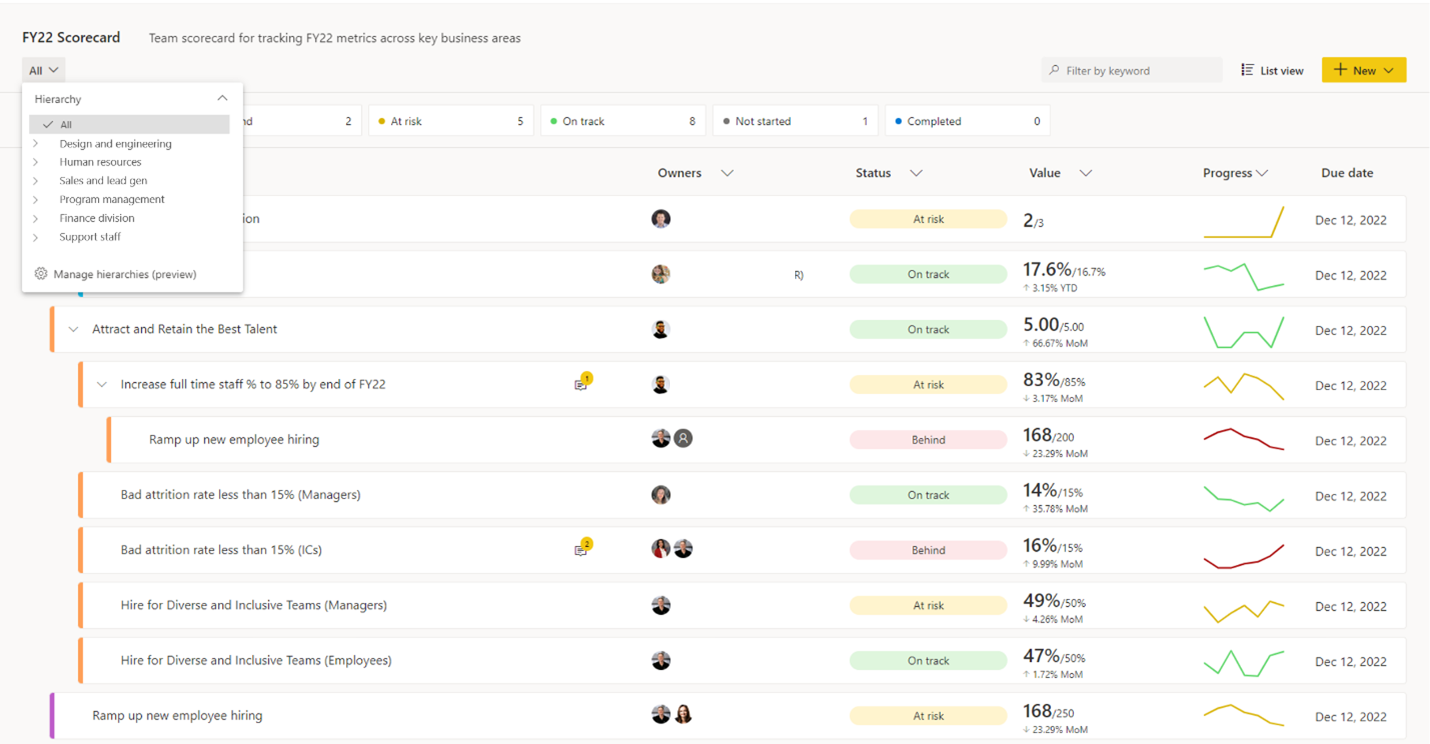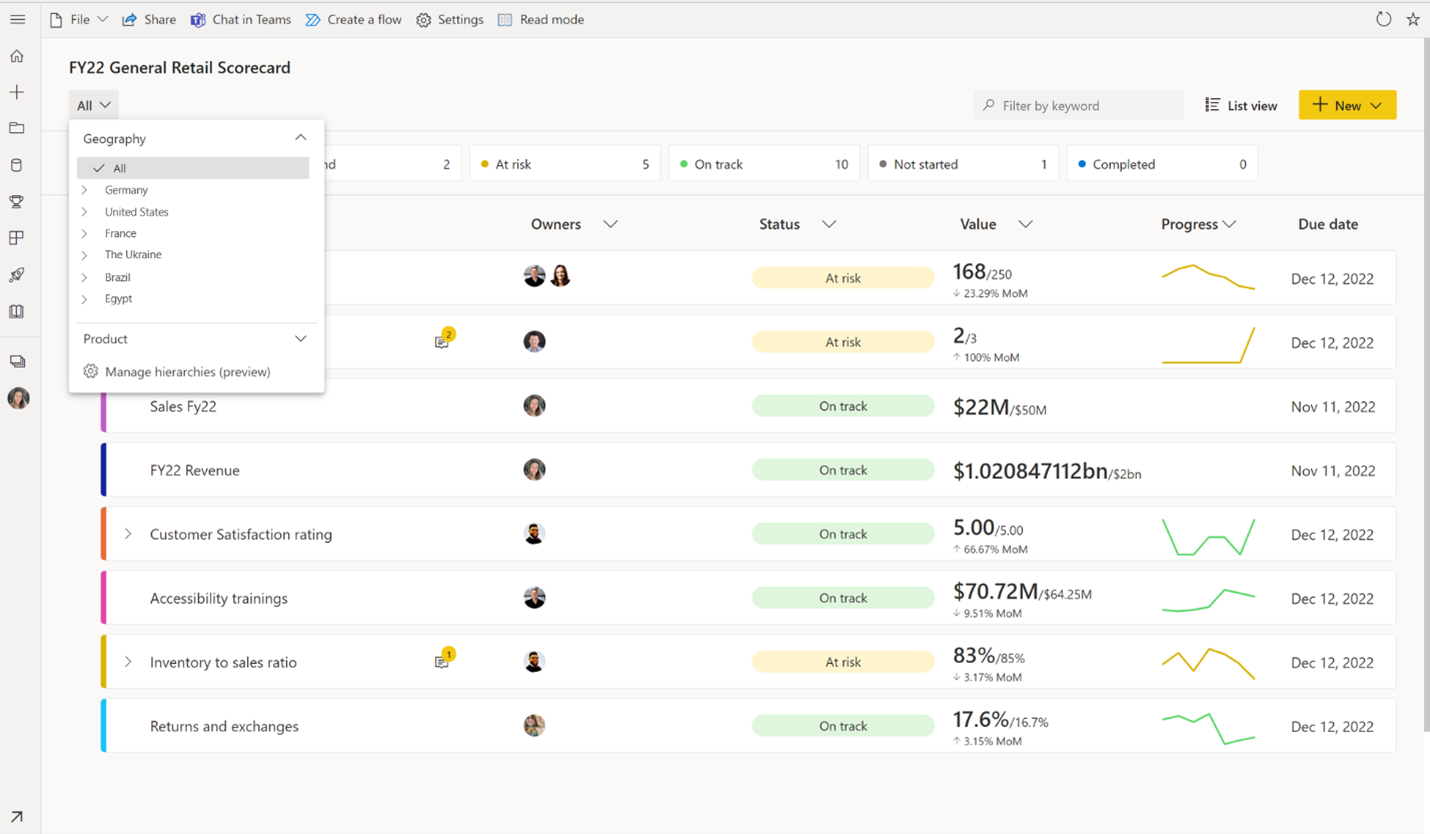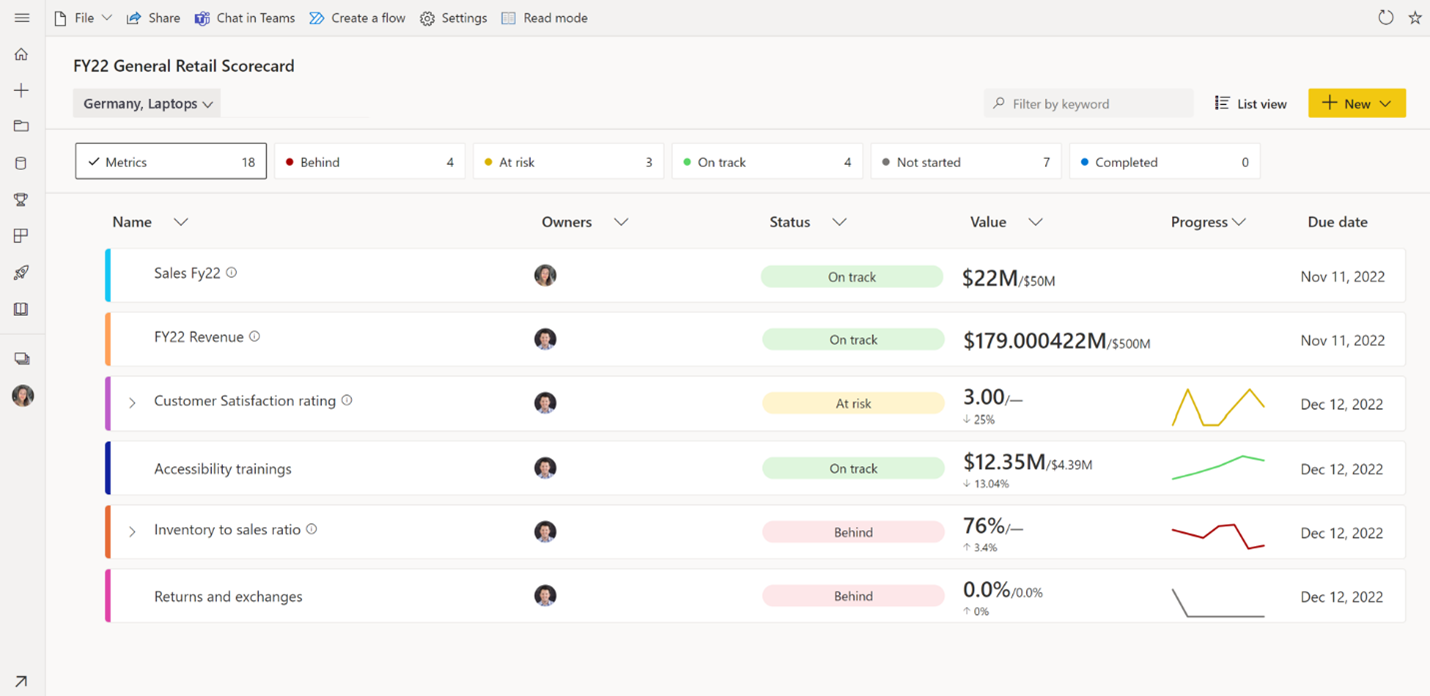方案:何时在 Power BI 记分卡中使用层次结构
适用于: Power BI Desktop
Power BI 服务
指标支持级联记分卡,这些记分卡沿记分卡中设置的目标层次结构汇总。 下面是三种有用的方案,其中级联记分卡提供优雅、大规模且高效的解决方案:
- 情景 1:跨团队衡量组织健康
- 方案 2:跨位置和产品区域的零售指标
- 方案 3:组织层次结构
方案 1:跨团队衡量组织健康状况
级联记分卡是帮助组织中不同部门实现目标标准化的优秀工具。 在此方案中,通过衡量员工参与度、满意度和招聘目标(通常在整个公司内映射的指标)来轻松跟踪组织的运行状况。 以下记分卡允许高级领导了解组织内每个部门如何衡量标准目标,例如减员率、合规性培训、员工满意度以及多样化和包容性招聘目标。
此记分卡不仅是一个用于指标跟踪的工具,而且是组织高层决策中的一个不可或缺的工具,有助于提升公司文化和整体组织健康。
方案 2:跨位置和产品区域的零售指标
对于零售方案,创建两个层次结构并使用切片器查看它们之间的交叉部分通常很有用。 在这里,零售组织设置了具有地理位置和产品层次结构的记分卡,以便他们可以按产品、位置或两者的组合来查看其标准目标。 在这里,他们正在研究德国的笔记本电脑指标。 他们甚至可以深入探讨柏林的特定笔记本电脑型号。
此视图很有用,因为也可以将所有者映射为层次结构的一部分,从而确保相应的分支经理拥有和管理每个零售位置的目标。
可以在层次结构的任何交点处进行检查,确保业务的所有重要区域得到相应的跟踪和更新。 在这种情况下,每个分支位置都可以使用相同的记分卡来提高目标性能,从而推动公司所有级别的数据文化。
此视图显示选中的两个层次结构。
方案 3:组织层次结构
我们经常看到高级管理层使用由组织层次结构驱动的记分卡。 公司会跟踪一组指标,这些指标沿组织层次结构进行跟踪,在许多情况下是合规性指标。 每个人的团队都需要满足这些标准。 领导需要一种快速而简单的方法来查看整体数字,并根据组织层次结构细分他们,看看团队表现良好,谁落后。
此记分卡使用组织层次结构作为记分卡层次结构,以便所有指标都按责任人细分。 在这种情境下,热图视图也很有用。 它让你更深入地、并列地了解哪些团队是红色的,哪些是绿色的,并识别出需要提高合规表现的特定团队。 组织记分卡的热度地图视图可促进每个业务级别的一致性和清晰度。
此记分卡显示热度地图自定义项。




